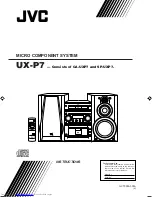
E & M Tie Line Support
Extension Hunting
When an E and M tie line call rings at a station that the programmer has disabled though programming
action, the system routes the call through the disabled station’s hunt list until it locates a group intercom
for the call to ring. Should all group intercoms be busy or should no one answer the call in a programmed
number of rings, the system then routes the call along the station’s call forwarding arrangement. With a
hunt list containing up to eight assigned group intercoms and access to each group intercom available to
several system stations, many users have an opportunity to service an E and M tie line caller. Coupling
this flexibility with the station’s call forwarding ability, provides many chances for system users to
service E and M tie line calls. A programmer could program a hunt list and a call forwarding scheme to
an unassigned station and provide a designated E and M tie line termination and routing center. There
would be no need to connect a telephone to the station port to use the feature in this manner. The
programmer could arrange several E and M tie line termination centers to service different extension
numbers. Each extension number could represent different calling categories, and ring at different blocks
of system stations (Also see Multipurpose Line Board Support).
End-to-End DTMF Signaling
The system accepts DTMF tones or digital signals from proprietary telephones and sends them as DTMF
tones through the public telephone network where they are received at a distant end for computer, voice
mail, or other peripheral feature access.
End-to-End Signaling On Intercom
After establishing an intercom call, the system can continue to send and receive dialing signals (DTMF
tones) through the intercom path. This feature can be performed from every station in the system and is
used by peripherals such as a VMI–X or ATI–D–1PT accessory unit for voice mail.
End-to-End Signaling On Lines
After a user has established an outside call, the system can continue to send dialing signals (DTMF tones)
through the public switched network and have them received at the distant end for inward call completion
(bank by telephone, voice mail). Users can perform this conventional, on or off-hook dialing feature from
every station in the system.
Enhanced Line Appearance
Refer to Line Appearance, Enhanced
Exclusive Hold
Refer to Hold, Exclusive
GCA40–130
DXP Plus General Description
76 – Understanding The Features
















































